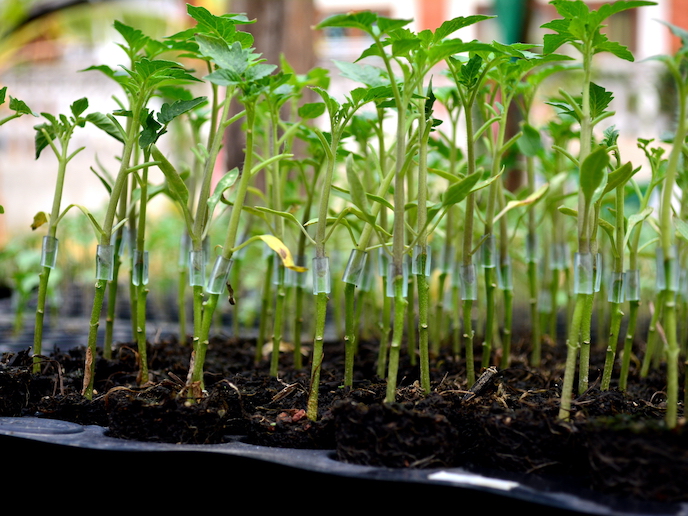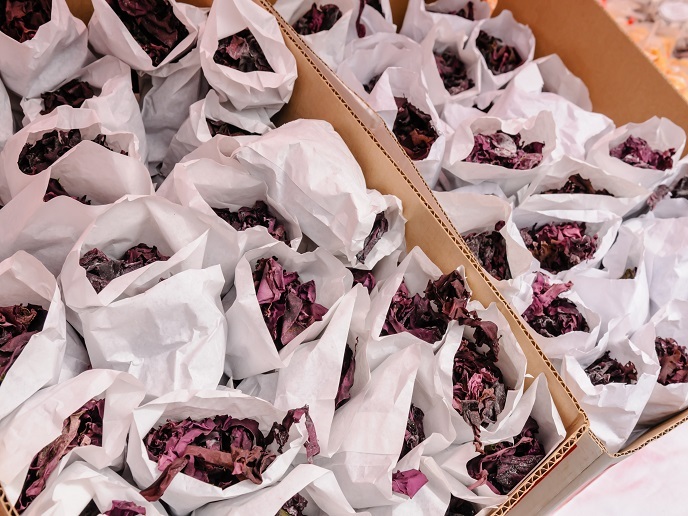Further insights into how plants spatially regulate hormones
Plant hormones, also known as phytohormones(opens in new window), are a group of structurally diverse, small, organic molecules produced by plants at low concentrations. They typically affect gene expression and transcription while helping regulate development and growth. Initially five classes of phytohormones were identified: abscisic acid, auxins, gibberellins, cytokinins and ethylene. This list was later expanded to include brassinosteroids, jasmonates, salicylic acid and strigolactones. It was long known that plants use a complex mechanism to spatially regulate auxin(opens in new window), with the ability to actively transport a hormone to specific locations like this, unique to plants. While it was thought that spatial regulation applied only to auxins, it was equally also known that many hormones can move around in plants. The GAtransport project, funded by the European Research Council(opens in new window), set out to determine if spatial regulation does occur for other hormones, focusing on gibberellins(opens in new window), as very different to auxin.
Insights into the role of proteins
“We reasoned that, if we confirmed active spatial regulation for gibberellins, other hormones more like auxin would be similarly regulated, and that our approaches could be applied to these too,” explains Roy Weinstain(opens in new window), project coordinator from Tel Aviv University(opens in new window), the project host. GAtransport demonstrated that plants do indeed spatially regulate gibberellins. Additionally, the team’s tools have already resulted in amongst others the first discovery of proteins that transport gibberellins in plants, providing measurements from the roots of live plants of the rate of hormone movement, alongside its trajectory.
From the molecule’s perspective
One of the challenges in investigating the regulation of hormones in plants has been the reliance on genetic screening to identify the function of genes. So-called functional redundancy makes this difficult, as manipulating a single gene doesn’t lead to a new phenotype, as other genes, with comparable functions, compensate for the lost activity. To get around this, GAtransport developed tools to monitor and manipulate the gibberellin molecule directly. The team developed versions of the hormone which were fluorescently labelled, while retaining their innate biological activity, so they could be visualised in the plant in real time. This meant that specific cells could be identified where the hormone accumulates, alongside the transport proteins responsible. Two techniques were also developed to manipulate the location where the hormone is formed, allowing its movement from these locations to be observed, alongside its trajectory and kinetics. These tools can be extended to the study of additional plant hormones. For example, fluorescent labelling was also used to study the transport of abscisic acid, and chemical biology approaches were developed to manipulate hormones in whole, live plants at the cellular level. “These approaches shed light on the transport of hormones and their function, at unprecedented spatio-temporal resolution. This takes us closer to understanding how plant hormones function at the cellular level,” says Weinstain.
Potentially wide-ranging benefits
Plant hormones are used extensively in horticulture and agriculture for applications ranging from herbicides, to control of flower growth and fruit ripening. Manipulating the transport of hormones could open up the field to more innovation, in a more environmentally friendly way. “As other organisms don’t have this mechanism, interfering with a plant’s hormonal transport should be less toxic than current chemical treatments, reducing environmental impacts,” adds Weinstain. The fluorescently labelled gibberellins developed by GAtransport are already being widely used by research laboratories across the world. The team continues to develop their hormone manipulation techniques, as well as characterising the proteins identified as gibberellin transporters, while also working to reveal the relationship between gibberellin transport regulation and its signalling pattern.







